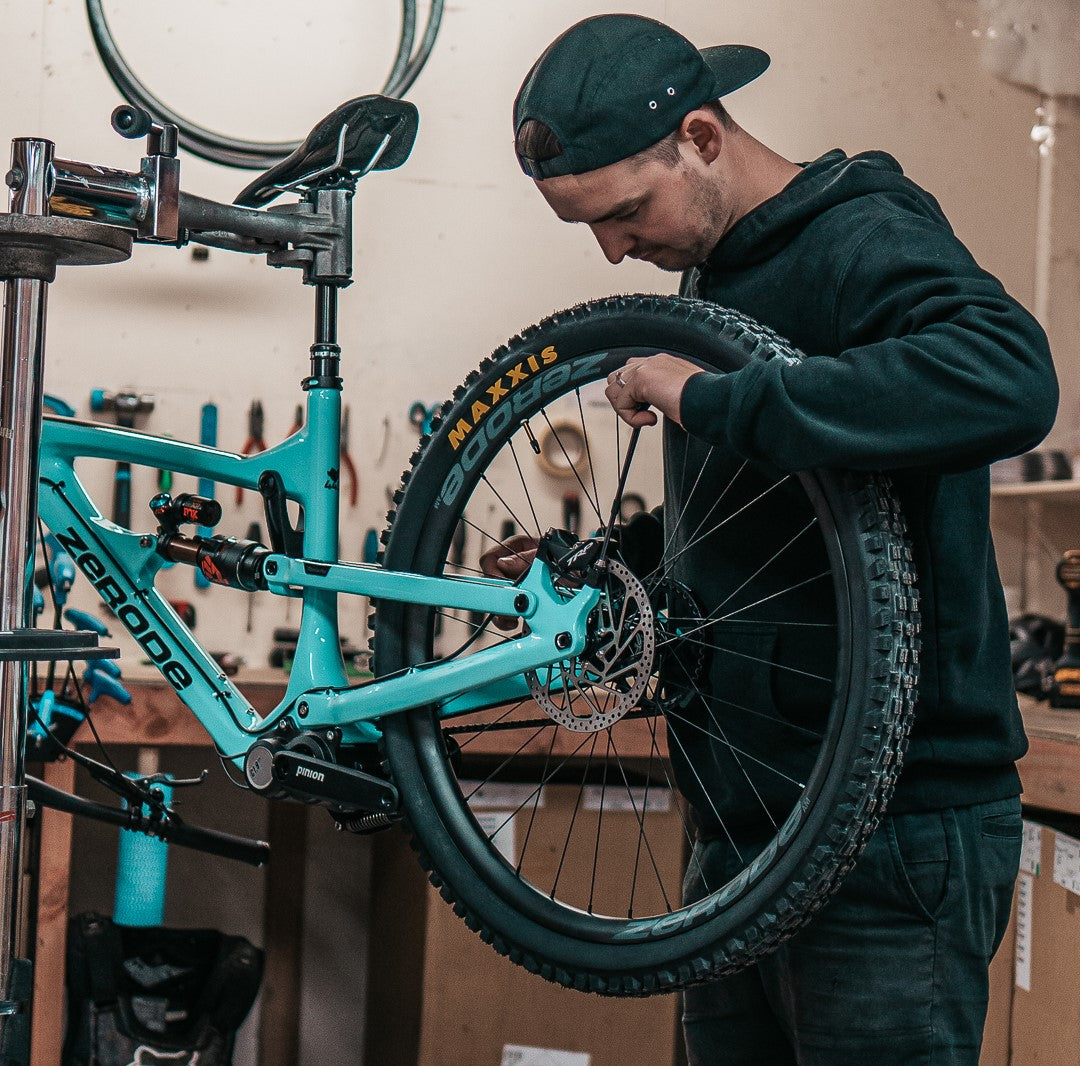revolutionising riding
The revolutionary use and placement of a gearbox at the heart of our frames allows us to revisit the key concepts of suspension design, such as optimised wheel path, sprung to un-sprung ratios and mass centralisation. Concepts long ago discarded by the bike industry because of the limitations of the drive train we all know and hate. Whether you are privateer pushing hard to compete at the World Series or a weekend warrior after the best suspension available, a Zerode is for you.
Every Zerode comes with accompanying documentation, such as torque specs, gearbox installation manual, 1st ride checklist and recommended settings. If you need any information, feel free to email us at europe@zerodebikes.com

Because the front sprocket on a Pinion gearbox is disconnected from the bottom bracket/ input shaft, it has an engagement point, just like with a rear hub. This engagement is lower than most rear hubs offer. It is said that this is a disadvantage for slow technical climbing. In practice, this disadvantage is hardly experienced by Pinion riders. At the same time we see cranksets and hubs coming onto the market that have a similar engagement to eliminate pedal kickback.

Even though we were among the first to construct high pivots, we did not opt for them for the trail and enduro models. For these bikes, the design is a compromise between many factors, including pedalling performance, suspension performance, weight and maintenance sensitivity. We strive for a simple and effective design. The use of the gearbox and the associated benefits in terms of suspension performance contribute enormously to this. In our opinion, this, together with the "real" pivot design, provides the perfect platform for all-round use on trail and enduro bikes. On the G3 downhill bike, however, we focused on nothing but the best performance downhill and opted for a high pivot. The high pivot provides a rearward axle path that provides even better sensitivity to impacts.

Up to 600%. Imagine a 10-60 cassette. Enough said.

A gearbox drivetrain requires minimal maintanance. Muddy ride? Spray your bike clean with the garden hose, put it in the garage and go enjoy the shower. A 10 minute oil change, once a year, is everything a Pinion gearbox needs. Gear adjustments belong to the past.

There is a huge amount of misinformation online about brake effect. The story goes, "single pivot designs suffer from brake jack or brake lock out". In reality all bikes, even bikes equipped with Horst links have brake effect to some degree. What happens is the traction force at the rear tire tends to rotate the suspension about the pivot, whether real or virtual, causing a suspension compression. It's worth noting the traction force at the rear wheel is usually small and so is the compressive effect and that the suspension is still free to respond to other inputs. Some bikes have more compression than others, in some situations this compression helps performance, in other situations it hinders performance.

In a nut shell, we don't like them. The pedalling performance of a Zerode is second to none. The "real" pivot design combined with a fixed chain line means it is possible to achieve very stable pedalling through the entire range of suspension travel while independently controlling the suspension rate via a link. With a Horst link or VVP design the virtual pivot races all over the show making it hard to control suspension rate and pedalling independently. You get a compromised design despite what the bike industry's marketing departments tell you.

Simply because we don't need to. Since we can use 142 mm single speed hubs, the flanges are already further apart and there is a fully symmetrical wheel with equal spoke tension across all spokes, making the wheel stronger than with a cassette hub.



